How to grow basil – successfully indoors and outside
Find out how to grow basil in a herb garden, in pots or indoors and add the delicious flavor of this popular herb to many dishes
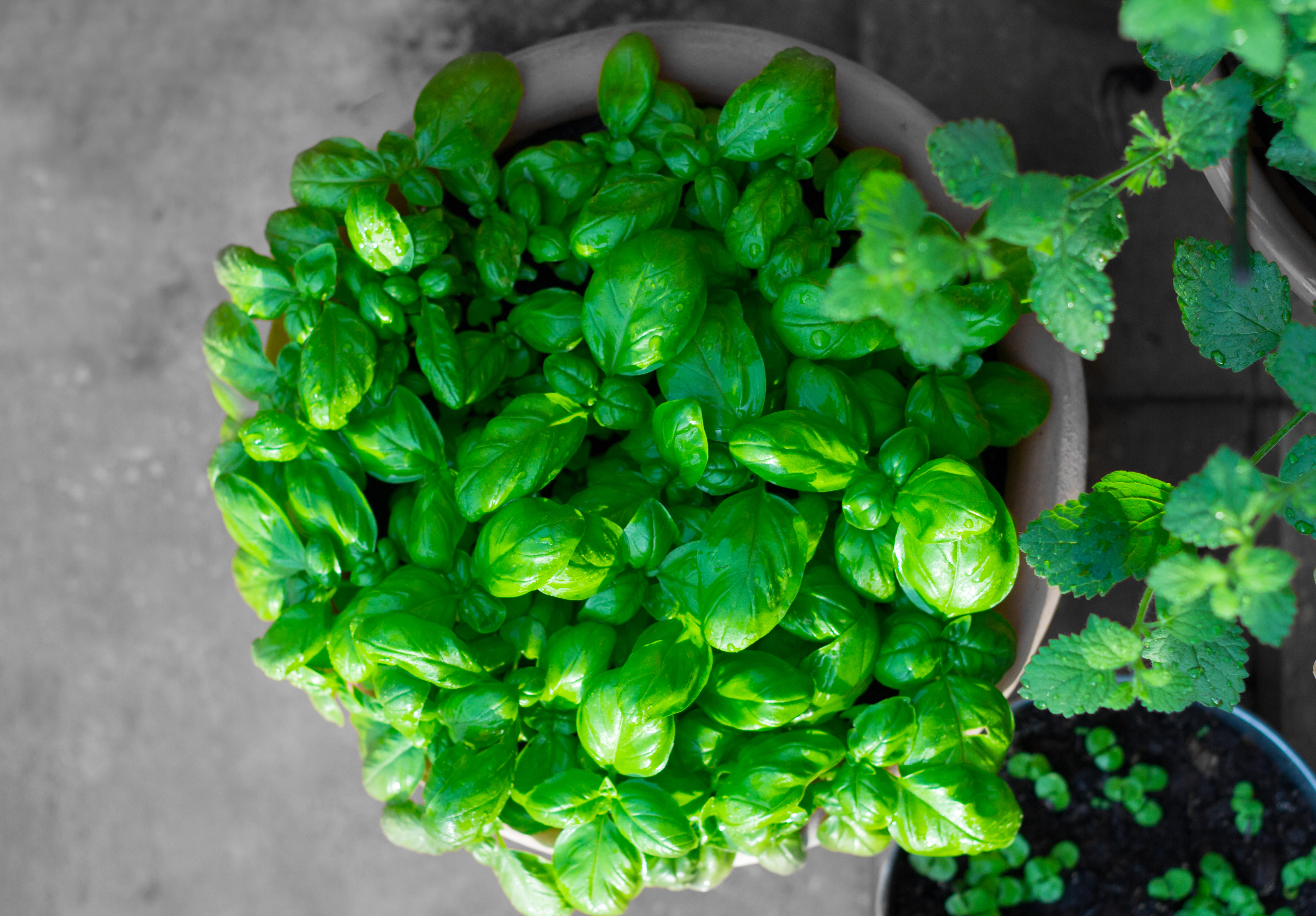

It is definitely worth your while learning how to grow basil as this popular herb is wonderfully versatile and it's one of the easiest herbs to grow at home, adding its its unique flavor to many dishes, or its aroma filling the air.
With many different varieties of basil, you could choose a few different types to grow as part of your herb garden ideas. If you know how to grow basil at home, this crucial ingredient will always be there to add to your culinary creations – from salads and sandwiches, to many Italian dishes or Thai recipes.
Basil is an excellent choice if you're growing herbs indoors in a sunny spot, but you can also grow basil outdoors in a pot on the patio as a herb planter idea, where you can enjoy its lovely aroma as you brush past it, or among the vegetables in a vegetable patch.
If you get to grips with how to grow basil then you can experiment with the many different varieties available, which you often can't find in grocery stores. The different types have varied flavors and aromas, from the large-leaved Italian basil varieties known for adding to pasta and pizza dishes or salads, to purple or lemon basil, tiny-leaved Greek basil, or even Thai basil with its mild liquorice notes.
If you sow basil seeds successionally from spring as part of your vegetable garden ideas, you can enjoy a continuous supply of different leaves for use in cooking for much of the year.
How to grow basil indoors
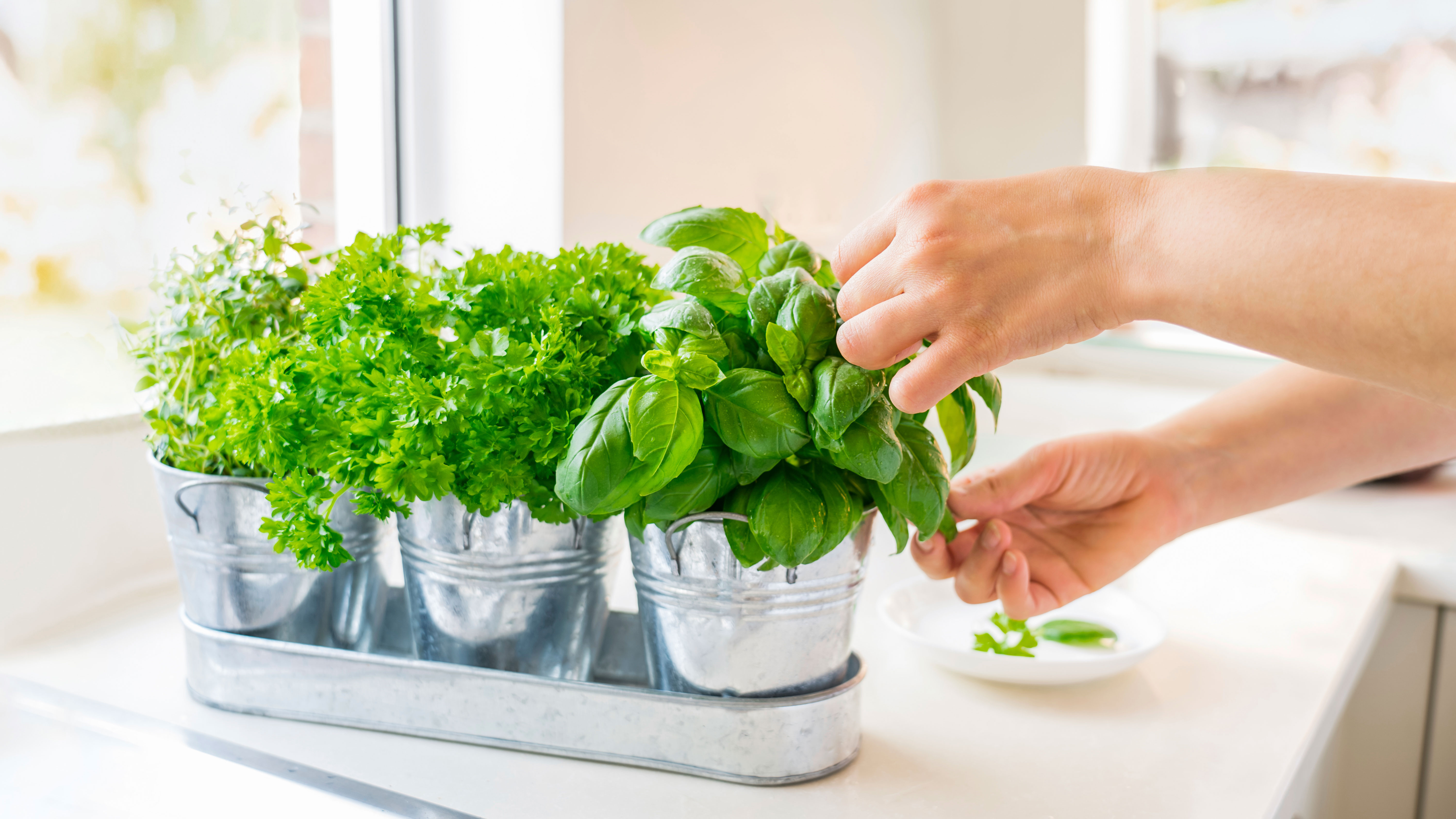
A true sun lover, basil can be grown indoors as long as you make sure it has about six hours of sunlight every day. In fact, given the right conditions it is one of the easiest herbs to grow indoors.
'Basil likes it hot so will thrive in a greenhouse and is even said to enhance the flavor of tomatoes when grown alongside them as a companion plant,' says Lucy Hutchings of She Grows Veg and author of Get Up and Grow.
If you don't have a greenhouse or conservatory, choose a sunny windowsill to grow basil plants, such as a south or south-west facing one, but protect the plant from the hot midday sun.
The plants will need regular watering, although will not like to sit in water or wet compost.
Barbara Segall is editor of the Herb Society magazine and she advises to 'be regular and diligent with water. Don’t let herbs stand in saucers of water, but equally don’t let them go without water in a sunny season.'
How to grow basil from seed
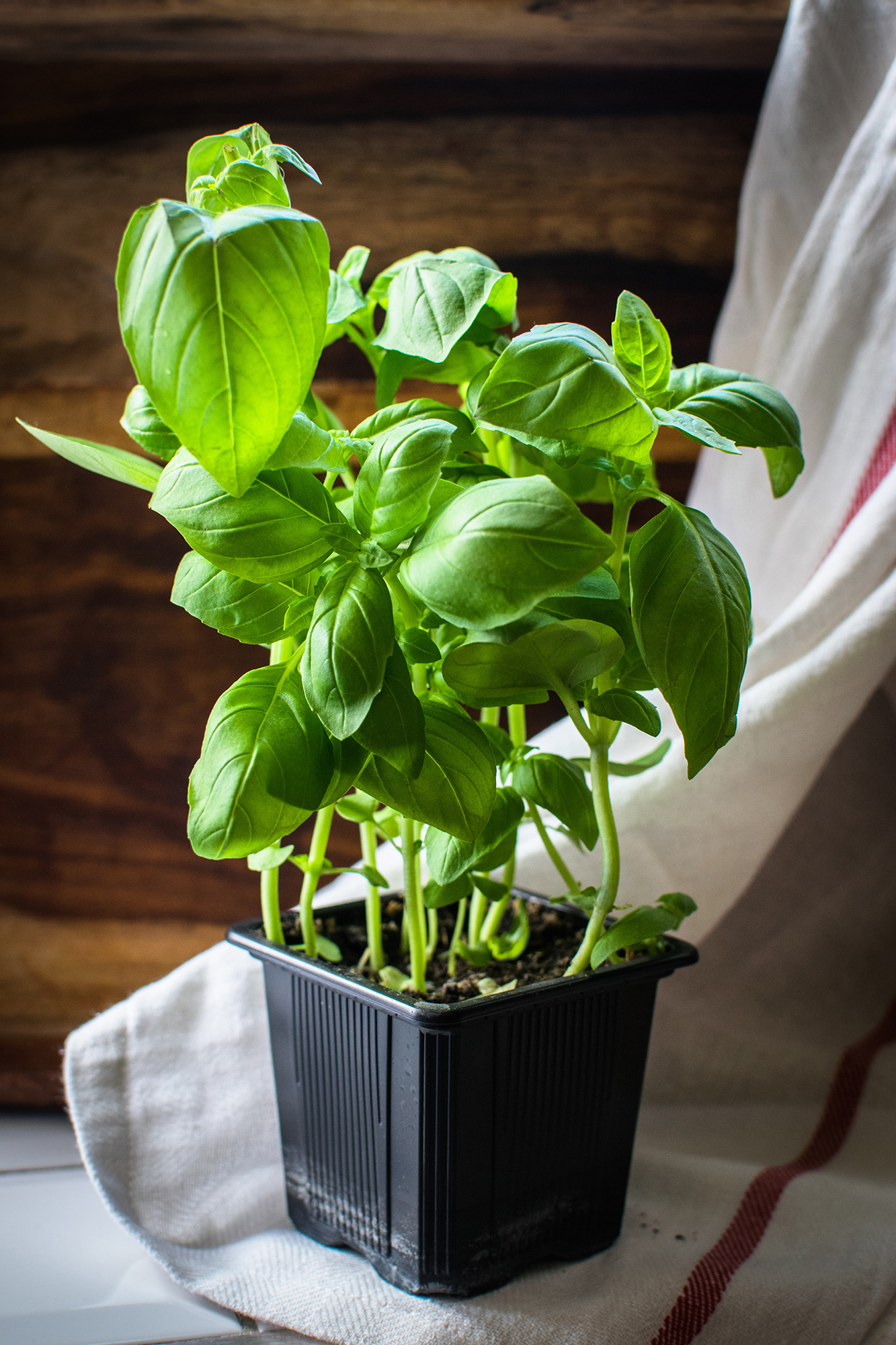
If you're looking for the most cost effective way of how to grow basil, then you can start it off from seed. It is ridiculously easy to grow basil from seed. It's important to know when to plant herbs, and you can start to grow basil indoors from seed anytime from March to mid-summer.
- Start your basil seeds off in small pots or seed trays of moist, peat-free multi-purpose compost.
- Only sow a few more basil seeds than you need as most will germinate. 'I sow several seeds per pot and thin them out as they grow until there are three to four strong stems,' says Barbara Segall.
- Cover the seeds with a thin layer of vermiculite.
- Water lightly.
- Use a propagator or cover the pot with a freezer bag secured with an elastic band to increase the temperature.
- Once the basil seeds have germinated, remove the covering, but keep the compost damp.
- Thin out basil seedlings so that each one has the space and share of water and nutrients to grow into a healthy plant.
- When the basil seedlings have developed their first true leaves and are large enough to handle, plant them on into 3.5 inch pots.
- Pot them on into larger pots as they grow and their roots start coming through the drainage holes at the bottom of the plant pot.
'Water the compost (not the leaves) regularly, in the morning: basil hates having wet feet overnight,' advises food writer Mark Diacono in his new book Herb: A Cook's Companion.
'Cut back to encourage new leaves to form, or enjoy the delicious flowers,' Mark adds.
How to grow basil from cuttings
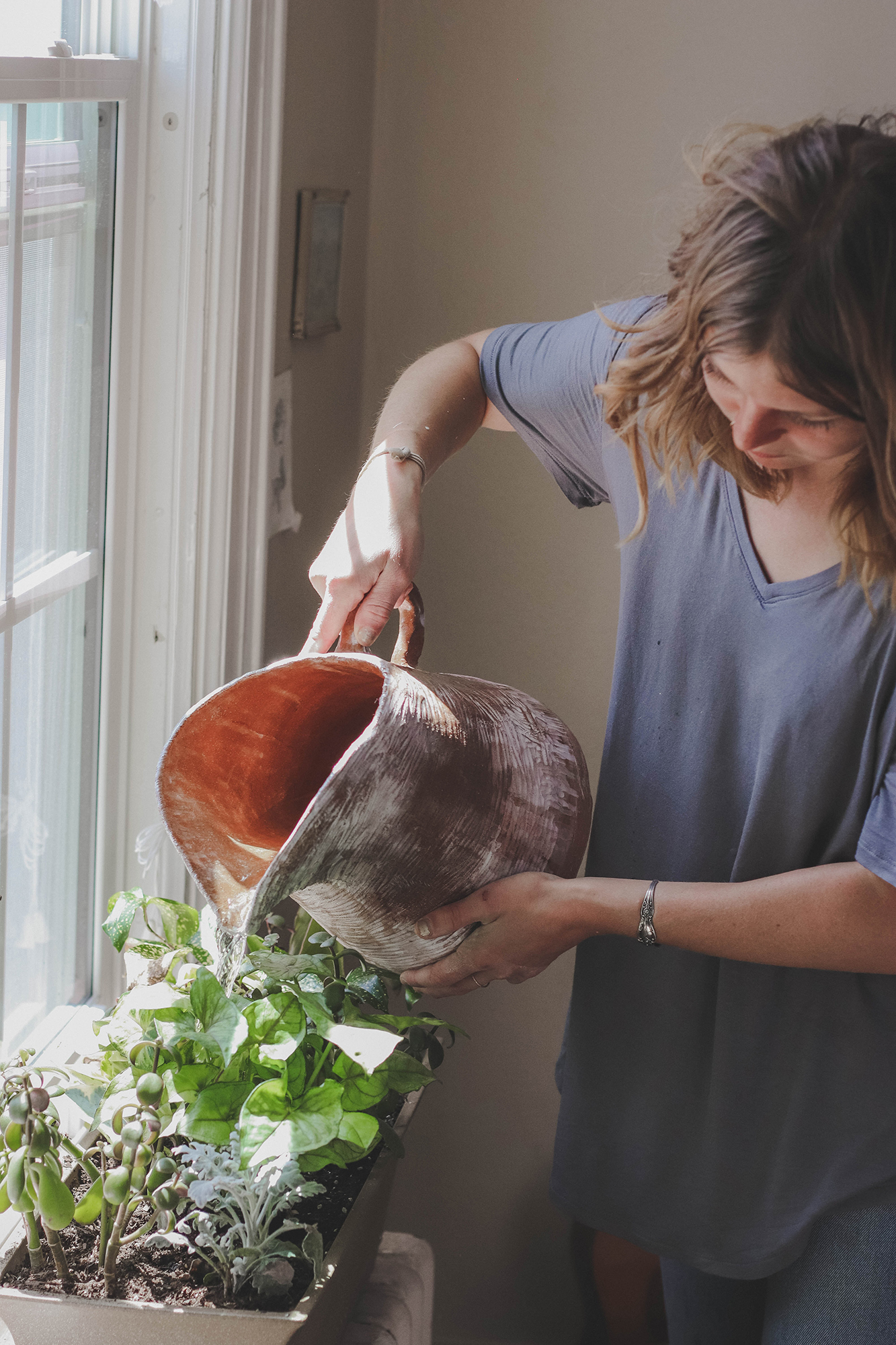
An alternative to growing from seed, if you know how to grow basil from cuttings then you can grow basil plants year round. You can then swap cuttings of different varieties with friends and neighbors, and it is a great way to make garden ready plants from supermarket herb plants or garden centers.
You can quickly learn how to take plant cuttings. 'It is really easy to make a seemingly endless supply of basil plants from just one,' says Lucy Hutchings.
'Take cuttings of around 6-8 inches long, remove the lower leaves and place in water. Within around a week you will see new roots growing from the submerged stem.
'Once there are a few decent looking roots, pot up your cutting and enjoy your new basil baby,' adds Lucy.
- If you use tap water, leave it for about 24 hours before adding the basil cutting.
- Place on a sunny windowsill, although out of direct sunlight.
- Change the water every couple of days to prevent bacteria from growing.
- When the roots of the basil cuttings are an inch or two long, remove the cuttings from the water and pot them up into a container filled with pre-moistened potting mix.
Keep the planted basil cuttings in a humid environment – place them in a propagator, or cover with a clear freezer bag. Once they have started to develop new growth, pot them on into larger pots.
Growing basil from cuttings cuts growing time by about half, so you will soon have some delicious leaves to harvest. This is a great project to try if you're gardening with children as they can produce their own crops for free.
How to grow basil outdoors
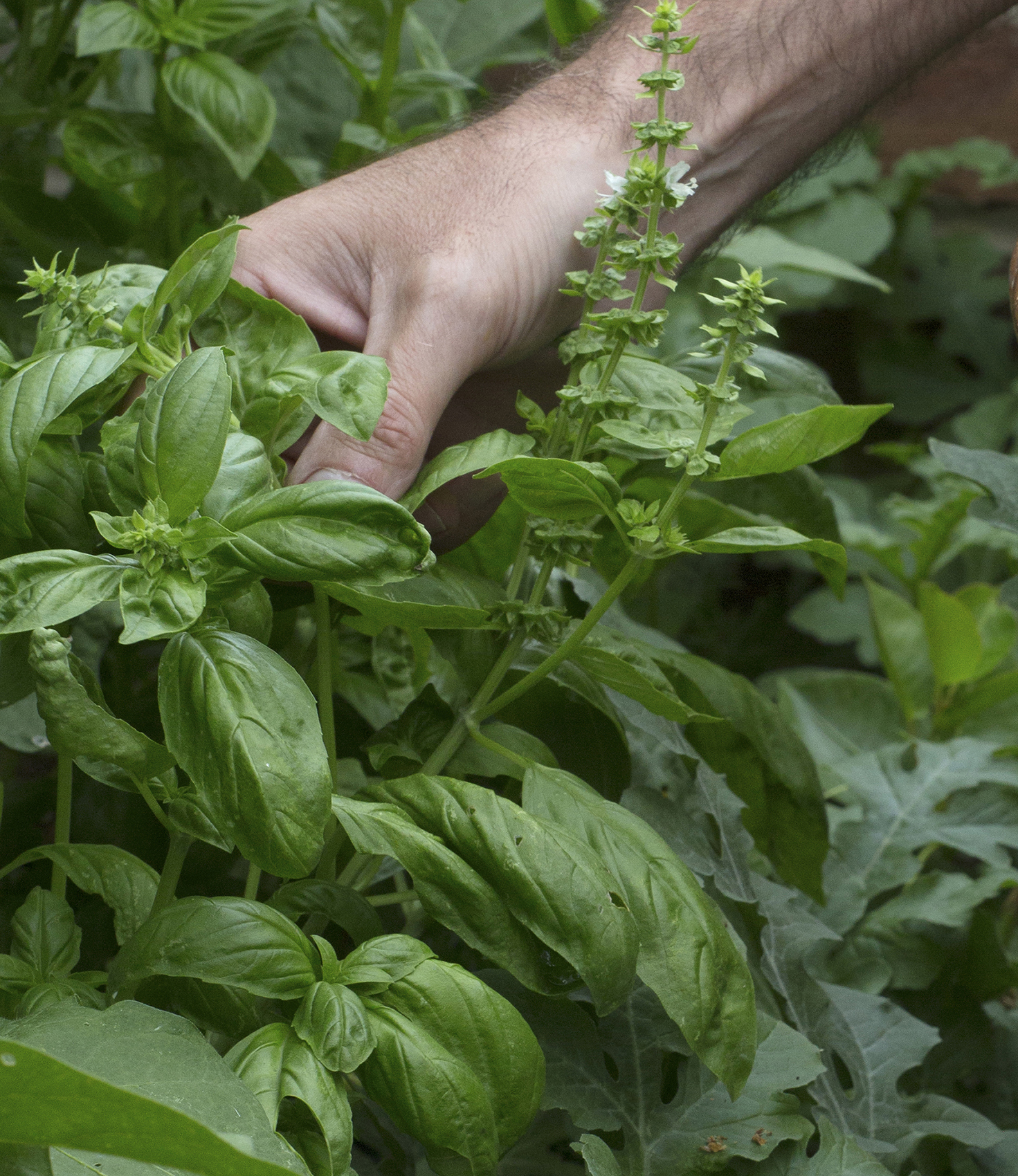
Depending on the hardiness zone where you live, even if you want to learn how to grow basil outdoors, you will probably still need to start the seeds off in pots inside from spring, either in a greenhouse or on a warm windowsill.
Sow the seeds in small pots of moist peat-free multi-purpose compost, cover with a thin layer of vermiculite, and place in a propagator or cover the pot with a freezer bag.
Once the seeds have germinated, remove the covering. When they have developed their first true leaves and are big enough to handle, plant into individual 3.5 inch pots.
When to plant basil outdoors
'Always wait for the air and soil to warm before moving basil into the garden,' advises author and gardening expert Melinda Myers.
Put your young basil plants that you have started off indoors, outside after the last frost, which in some areas will be early summer, or warmer regions could be in spring.
'Cold air and soil can stunt or damage the plants and increase the risk of downy mildew. You may even see blackened leaves and other damage,' Melinda adds.
For how to grow basil outdoors, acclimatize the basil plants to the conditions outdoors for about two weeks before planting them out. Do this by standing them outside in a sheltered, lightly shaded spot during the day, and bring them back in at night time.
'This plant is really not a fan of the cold, so wait until night time temperatures are up to around roughly 50ºF before you plant out basil it into its final position,' advises Lucy Hutchings.
Where to grow basil outdoors
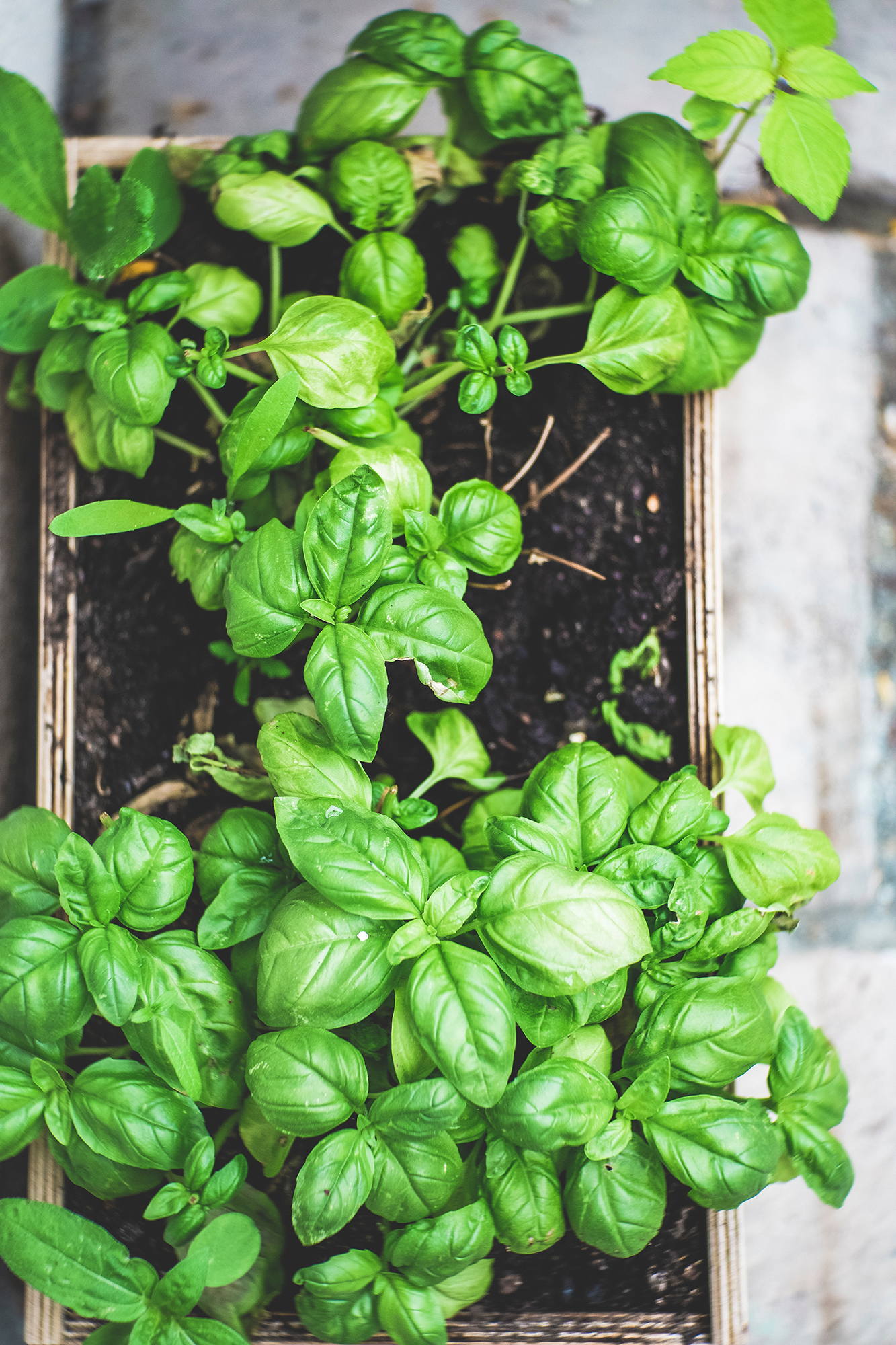
When you come to plant the basil plants in your garden, choose a sunny, sheltered spot with well-drained soil. As basil makes such a good companion, such as for tomato companion planting, and produces a prolific crop when well cared for, it is an excellent addition to small vegetable gardens.
Celebrity gardener Monty Don advises that basil needs generous space to grow well. He recommends a space of 9 inches between the plants when they are 4 inches tall, so that the basil will grow vigorously.
How to grow basil in a pot
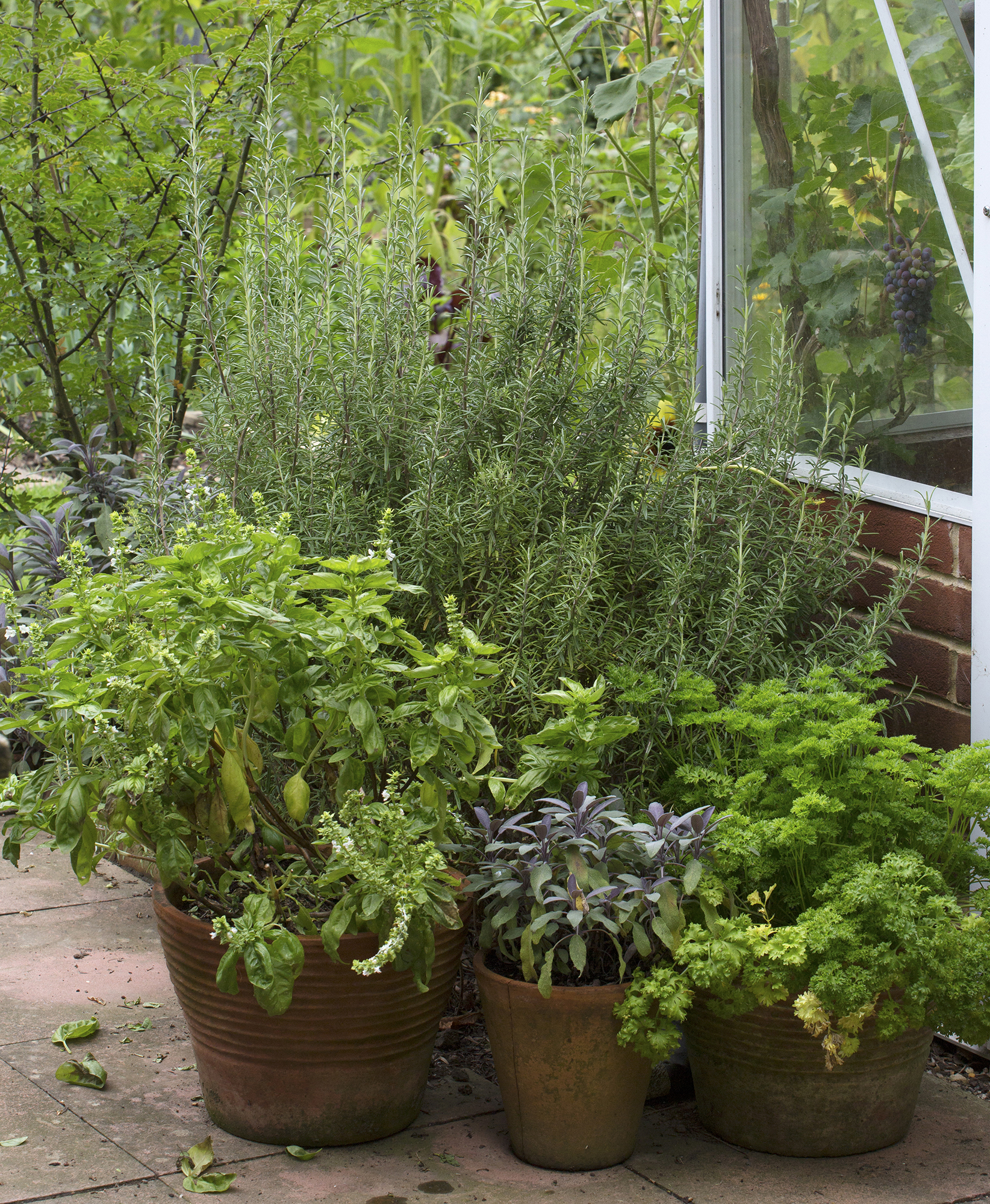
Basil also grows well in containers outdoors, and the advantage of this is that you can move the plant around to give it pride of place in the sunniest, sheltered spot. It can then be close to hand for cooking, and if it is in pots by a seating area you will be able to enjoy the scent of this aromatic herb.
Experts at Dobbies recommend adding a layer of grit to the surface of the compost in each pot to keep weeds at bay and stop rain splash marking your herbs.
Basil will grow fast in pots, so you can expect to have to pot up the plants a few times during the growing season.
In fall, when temperatures start to dip, bring a few plants back indoors to provide a fresh supply of leaves in winter.
Caring for basil plants
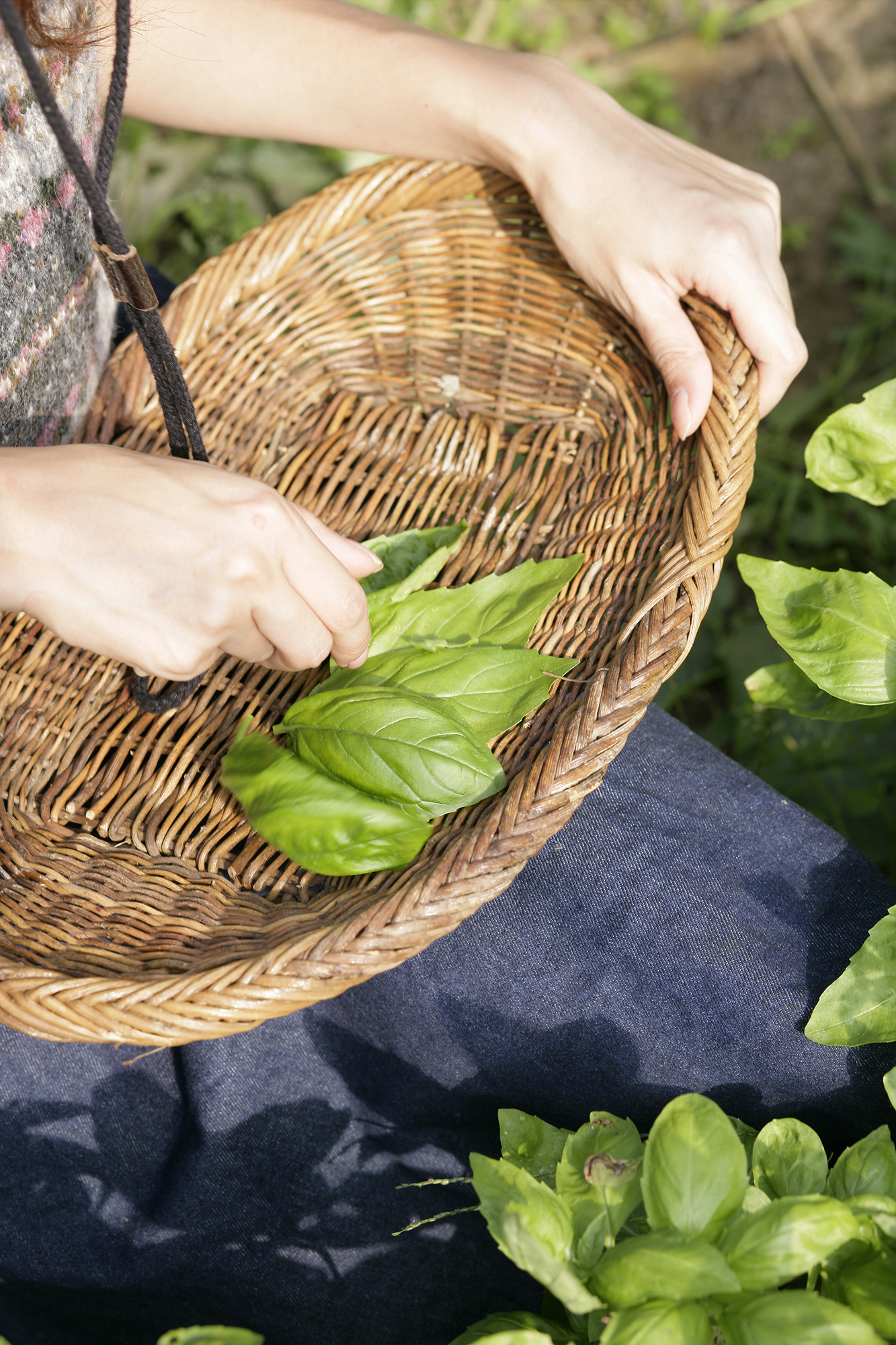
Basil plants do need a bit of care to keep them producing tasty leaves. Learn how to prune basil to keep plants healthy, and also follow these other care tips:
- Water basil plants sparingly as they do not like to sit in wet compost.
- Ideally water before midday, to avoid basil plants developing mould if they are damp at nighttime, and avoid splashing the leaves.
- Feed basil plants with liquid fertiliser every week to keep your herbs at their best.
- Pinch out the flowering tips to delay flowering and encourage bushiness.
Harvesting basil
If you have followed the advice on how to grow basil you should be able to regularly pick the leaves from the top of the basil plant to use fresh in cooking, and to encourage new growth and a bushier shape. You can be quite ruthless – so learn how to harvest basil and when to harvest basil to get the most from your plant.
Mark Diacono advises not to refrigerate harvested basil leaves as 'this accelerates their decline.'
When cooking with basil 'its flavor floats away in the steam of any heat, so it’s almost always best added on serving. The exception is if using gently warmed in milk, cream or oil to extract the flavor,' says Mark.
So, armed with all the tips you need on how to grow basil, you can add wonderful depth and flavor to a multitude of dishes with this versatile herb.

What is the best way to grow basil?
The best way to grow basil depends on the time of year that you are growing it, and also the climate in the region where you live.
For many people, growing basil indoors is a favorable option as it can thrive on a warm, sunny windowsill, and the flavorsome leaves then then be close at hand for adding to cooking. But basil can be successfully grown outdoors, too, whether in a herb garden or pots and containers, so choose the option that is best for you.
Should I let basil flower?
If you are growing basil for its leaves to use in cooking and salads, then you don't want to let it flower – known as bolting – as then the plant will put its energy into the flower production and as a result the leaves will not have a good flavor.
That said, flowers on basil are attractive as plants for pollinators, so particularly if you are growing basil in a vegetable patch, it can help with the health and pollination of other plants and crops, as well as helping to nuture a wildlife garden.
An idea would be to allow some of your basil plants to flower, to help promote a sustainable garden, while keeping the majority producing healthy and tasty leaves by harvesting them regularly.
Sign up to the Homes & Gardens newsletter
Design expertise in your inbox – from inspiring decorating ideas and beautiful celebrity homes to practical gardening advice and shopping round-ups.
Rachel is senior content editor, and writes gardening content for homesandgardens.com, Homes & Gardens magazine, and its sister titles Period Living Magazine and Country Homes & Interiors. She has written for lifestyle magazines for many years, with a particular focus on gardening, historic houses and arts and crafts, but started out her journalism career in BBC radio, where she enjoyed reporting on and writing programme scripts for all manner of stories. Rachel then moved into regional lifestyle magazines, where the topics she wrote about, and people she interviewed, were as varied and eclectic as they were on radio. Always harboring a passion for homes and gardens, she jumped at the opportunity to work on The English Home and The English Garden magazines for a number of years, before joining the Period Living team.
-
 Is the viral salt hack the secret to a weed-free patio? A garden expert warns of irreparable, long-term damage – plus reveals the safest way to get results
Is the viral salt hack the secret to a weed-free patio? A garden expert warns of irreparable, long-term damage – plus reveals the safest way to get resultsYou might have seen gardeners on TikTok or Instagram using salt to kill weeds in pavers, but this hack should be avoided at all costs
By Thomas Rutter Published
-
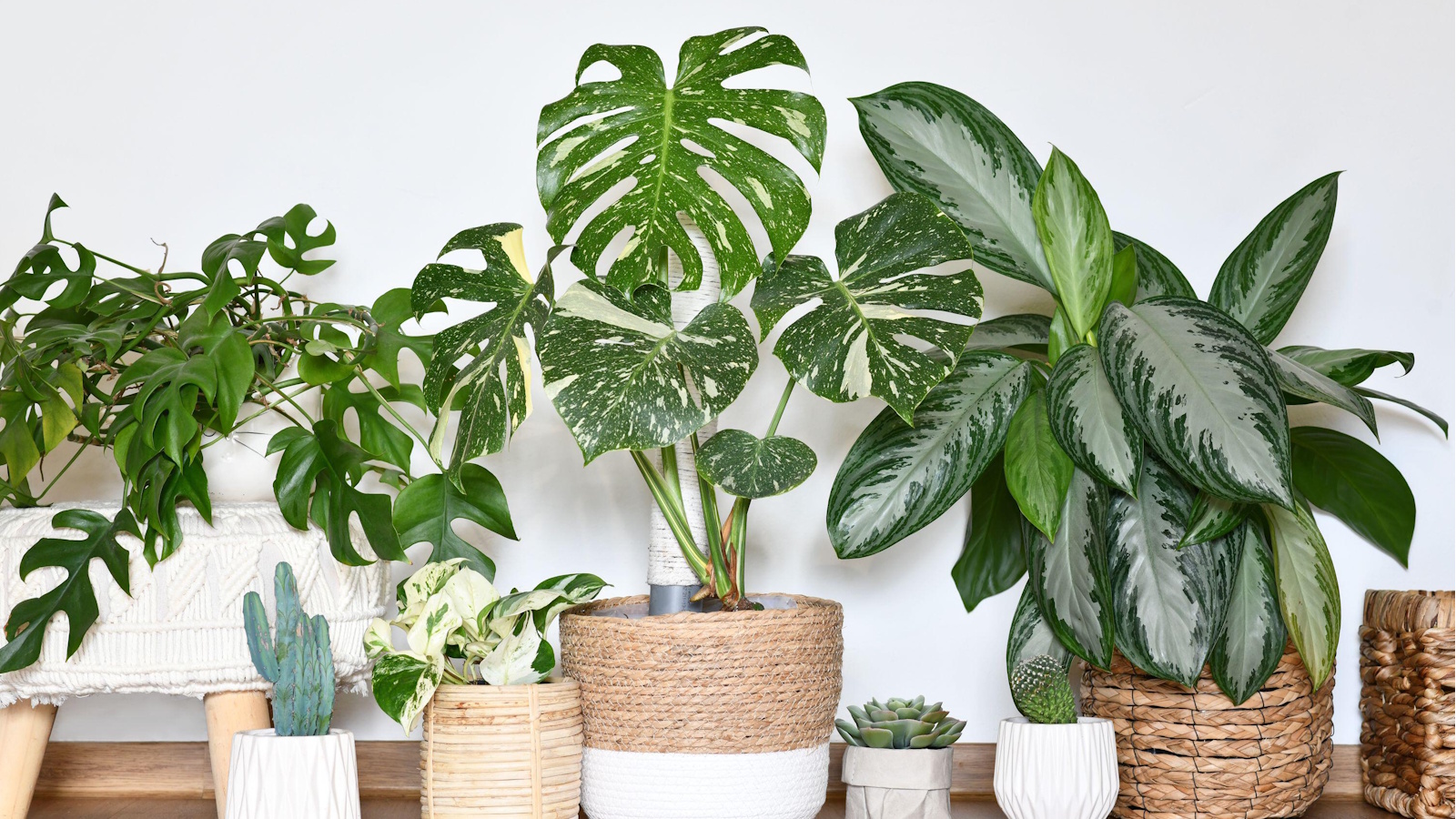 9 longest-living houseplants – expert recommendations and tips for species that can live over 10 years
9 longest-living houseplants – expert recommendations and tips for species that can live over 10 yearsInvest in these houseplants now for years of luscious foliage in your home
By Tenielle Jordison Published